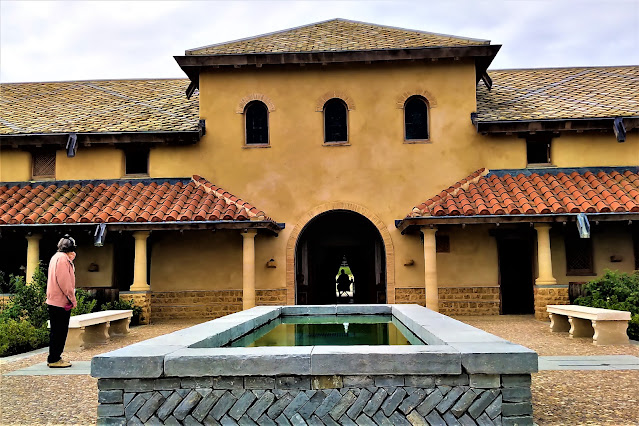Historic Swalcliffe
This evening, my post records a re-visit of historic buildings and landscapes, all with around a three mile radius of the small Oxfordshire village of Swalcliffe near Banbury in southern England.
The locale is exceptionally rich in history from the Bronze Age (3300 BC to 1200 BC through to Iron-Age, ( 800 BC—43 AD) Roman period (AD43-AD410) , Saxon period (AD410- AD1066) and medieval (1066AD- 1500AD). (All time periods are approximate.)
In the first trip I was fortunate to be escorted by three highly qualified and knowledgeable local experts.
First call was the Great Barn which was built to store the produce of the manor. Work commenced in 1404 with the oak roof timbers which as living trees probably date back to the 1200s. This building is now listed as an ancient monument and owned by the Oxfordshire Buildings Trust. Inside is a collection of farm wagons from days past plus a display of coins, pottery and other finds from local Roman sites.
Great Barn interior
Great Barn exterior
Next to the magnificent church which has 9th century Saxon origins with subsequent embellishments and additions covering all periods of English ecclesiastical architecture up the 15th century. Unusually a few colourful wall decorations from the pre- 1540 Reformation have survived and been restored.
Church interior
Restored wall decoration
Next, into the wonderful countryside where first stop was an intersection where a Roman road (now a farm track) crosses a minor B road. In the middle distance is a hill on which once sat an Iron-Age fortified settlement.
The Roman road (illustrated) ran from Droitwich (Salinae) through Stratford upon Avon and Eatington and appears to terminate at Swalcliffe Lea. However, it is possible the road continued through Broughton and Bodicote to the river crossing at Twyford. Droitwich is about 41 miles NW of Swalcliffe.The former Roman road is described in a 12th century charter as 'Salt Street'. There is a Salt Way Lane at nearby Winderton, just 5 miles from Swalcliffe.
Droitwich and it's salt reserves.
The town is situated on massive deposits of salt, and salt has been extracted there since ancient times. The natural Droitwich brine contains 21⁄2 pounds per imperial gallon (0.25 kg/L) of salt, ten times stronger than sea water and rivaled only by the Dead Sea.
From the Roman times up to the modern era salt has played a key role in society acting as a food preservative and used in medicine as a remedy, support treatment and a preventative measure.Salt has also been used as a currency.It would appear likely that the road illustrated below was a key supply line for salt for at least 1000 years.
Next to a local farming complex where the lid of a Roman era stone coffin has been set up as a seat.This item probably came from the Swalcliffe Lea site as mentioned below.
Sarcophagus lid
Next we followed farm tracks to a location where scientific research has identified what appears to be an Iron-Age community of round houses.
Site of Bronze Age settlement
Next to Swalcliffe Lea where archaeologists have found evidence of an extensive Romano- British commercial settlement which includes a number of high status residences.
Site of Romano-British commercial settlement
Next we moved on to the recently excavated luxury villa at Broughton which was subject of a Time Team investigation as found in this (1 hour) video. Just walking across the field we picked up a few pieces of Roman era pottery fragments lying on the surface. Close to this site was found a lead lined stone sarcophagus containing the remains a 5ft tall female adult from the Roman period. She is believed to have been very high status. More research on the remains are to be undertaken.
In it's hey day, around AD350, the Broughton Villa was similar to the neighbouring villa at North Leigh.
Artist's impression of North Leigh
Fragment of Roman roof tile found on ground surface.
Overall, an excellent day with lots of information and images to digest.
On the occasion of the recent (second) visit we were fortunate to spot wildlife including a hare and kites.
Kite
History apart, this district offers excellent walking opportunities through the countryside and local villages.


















Comments
Post a Comment